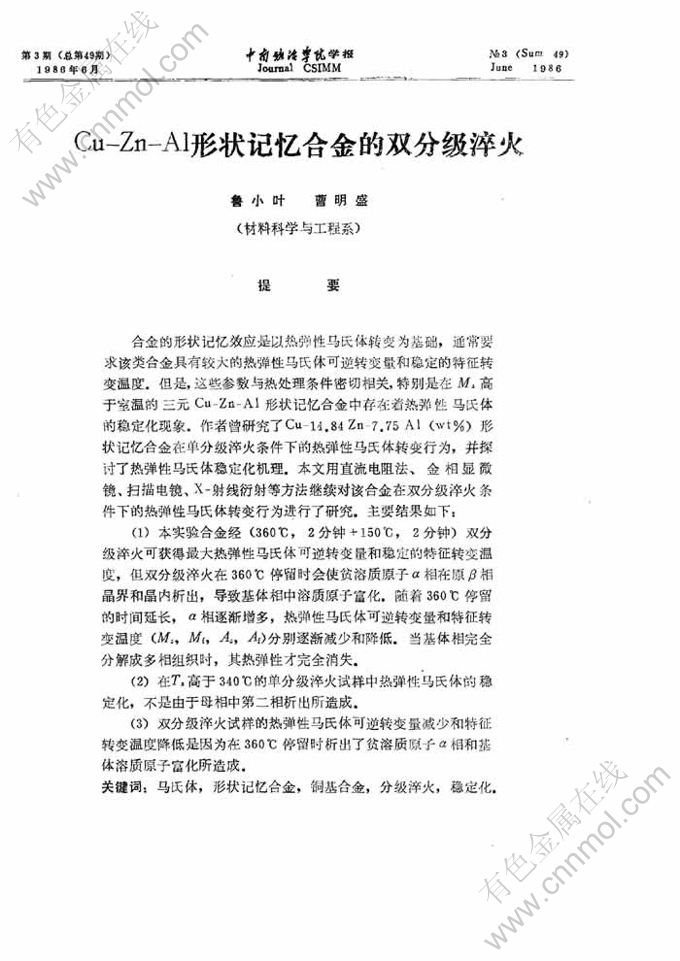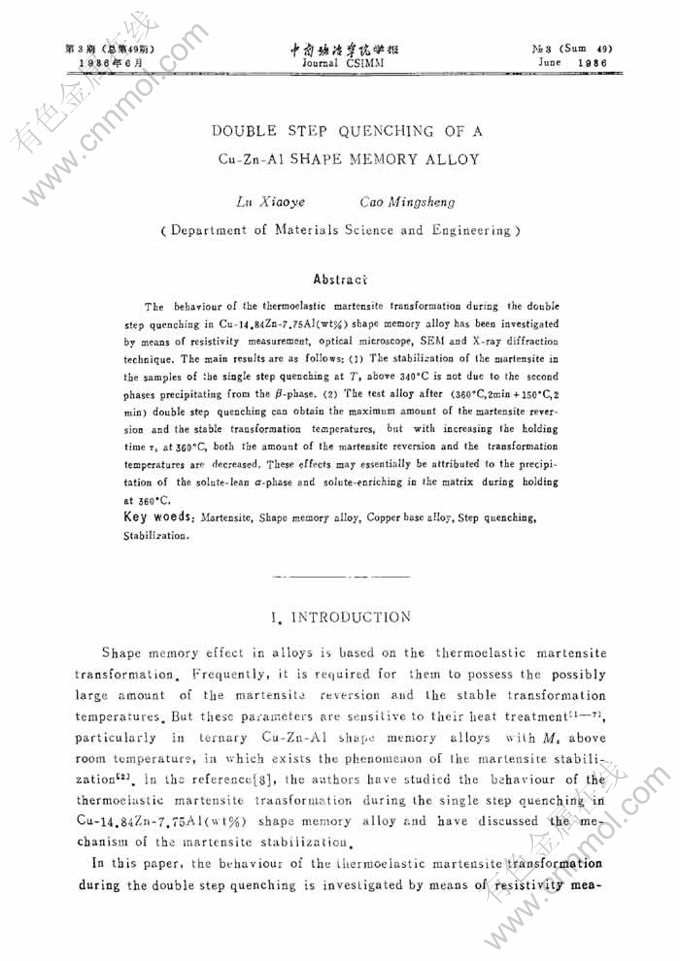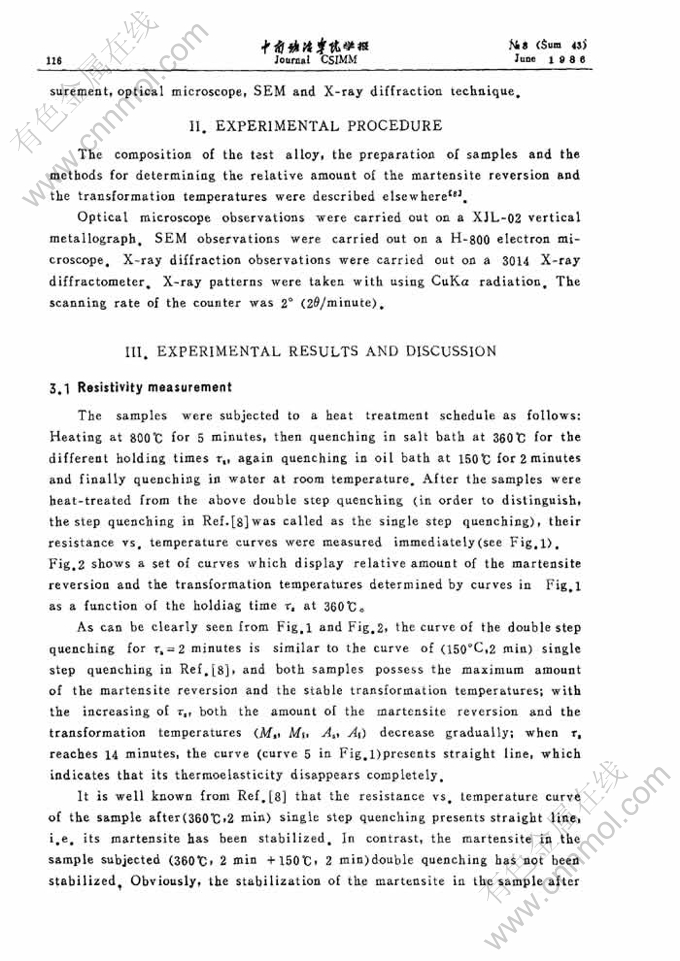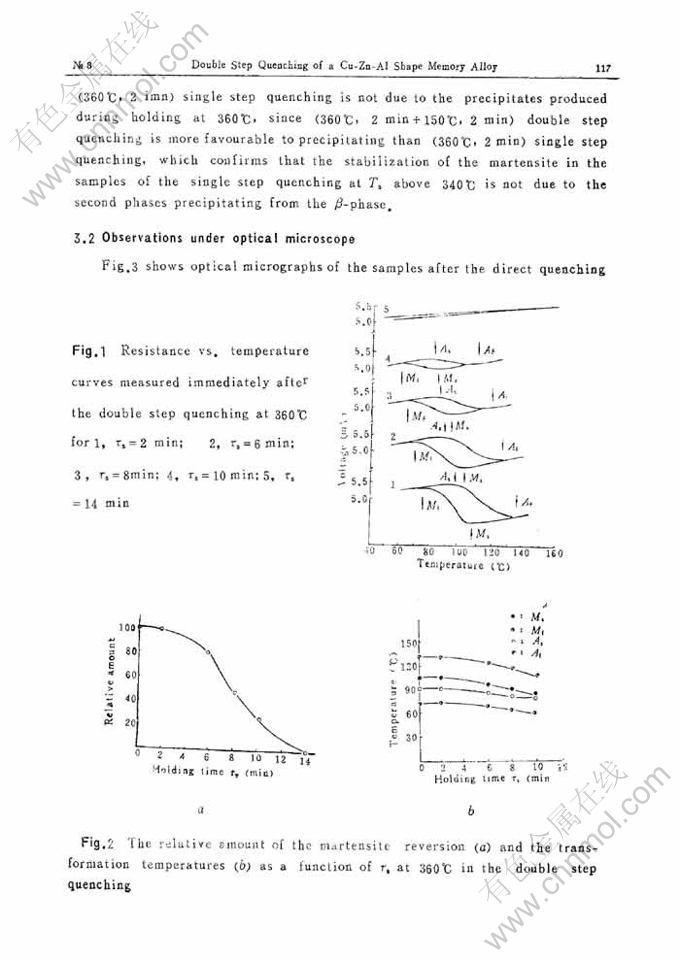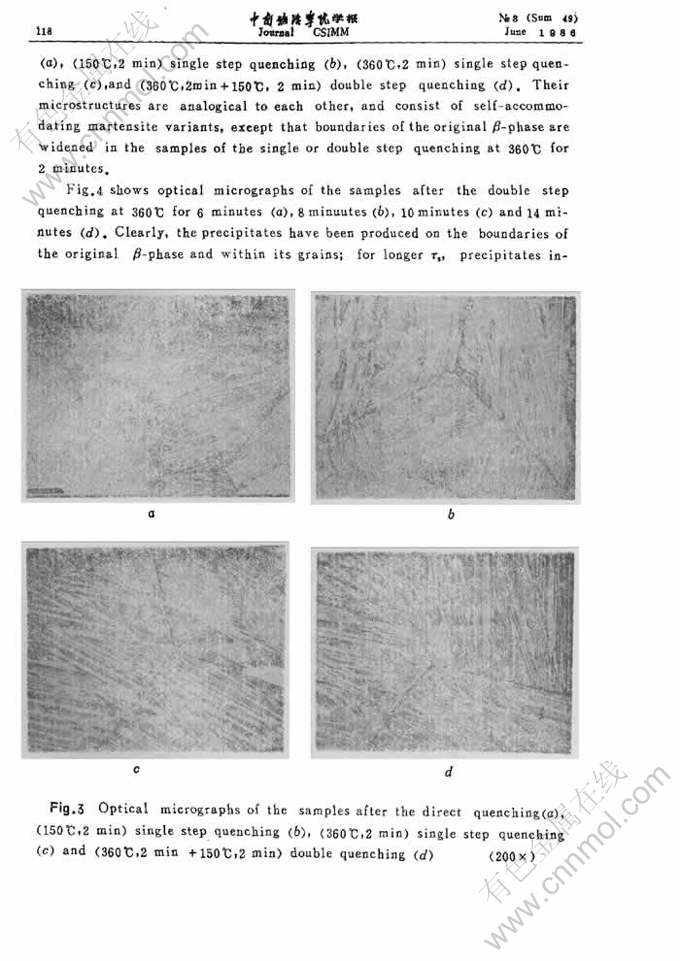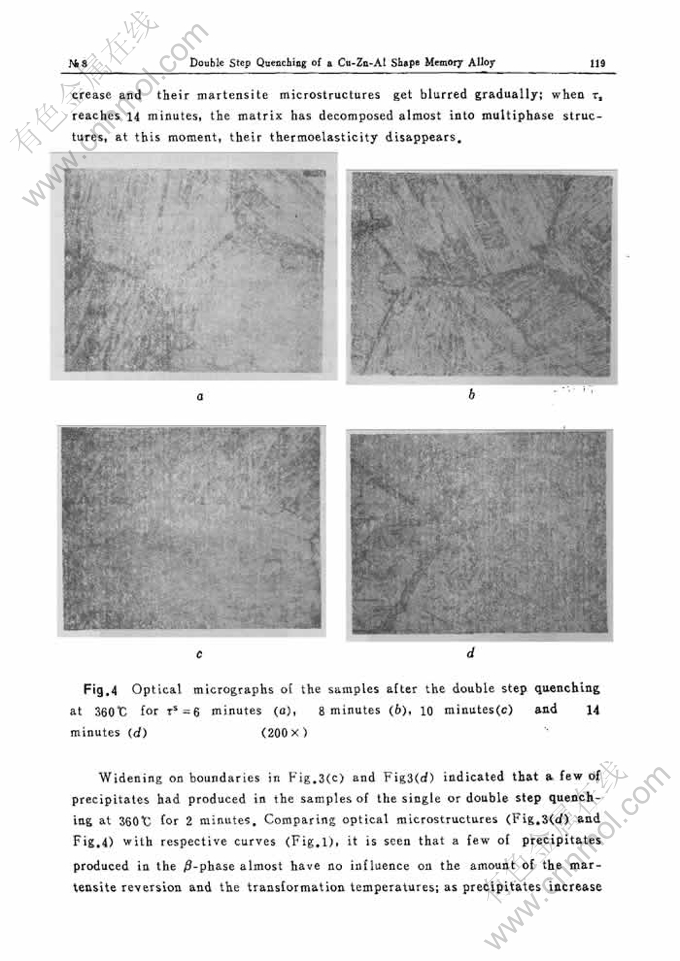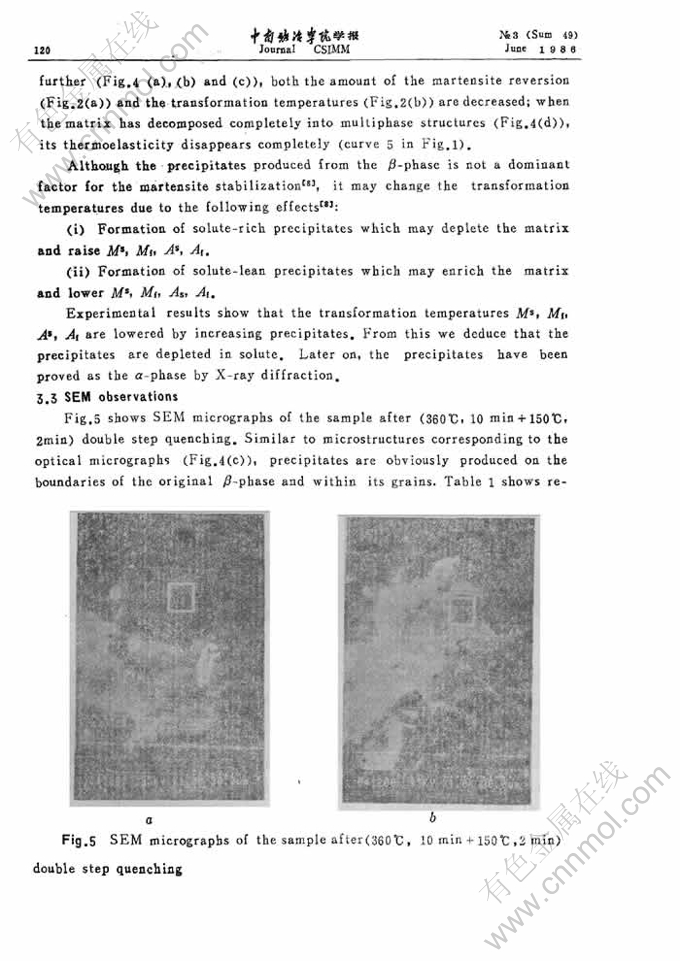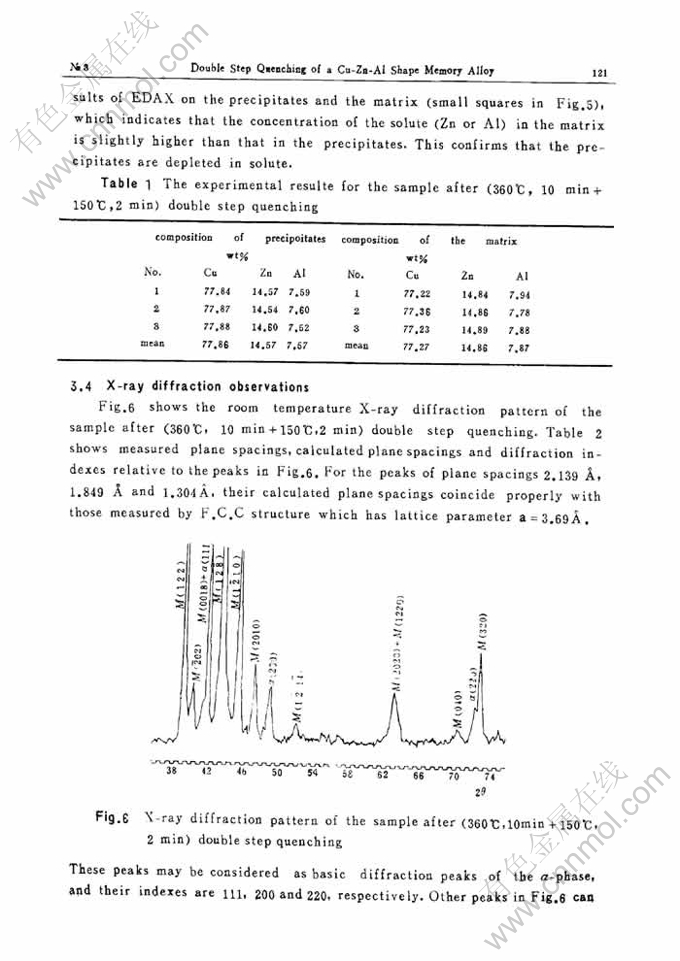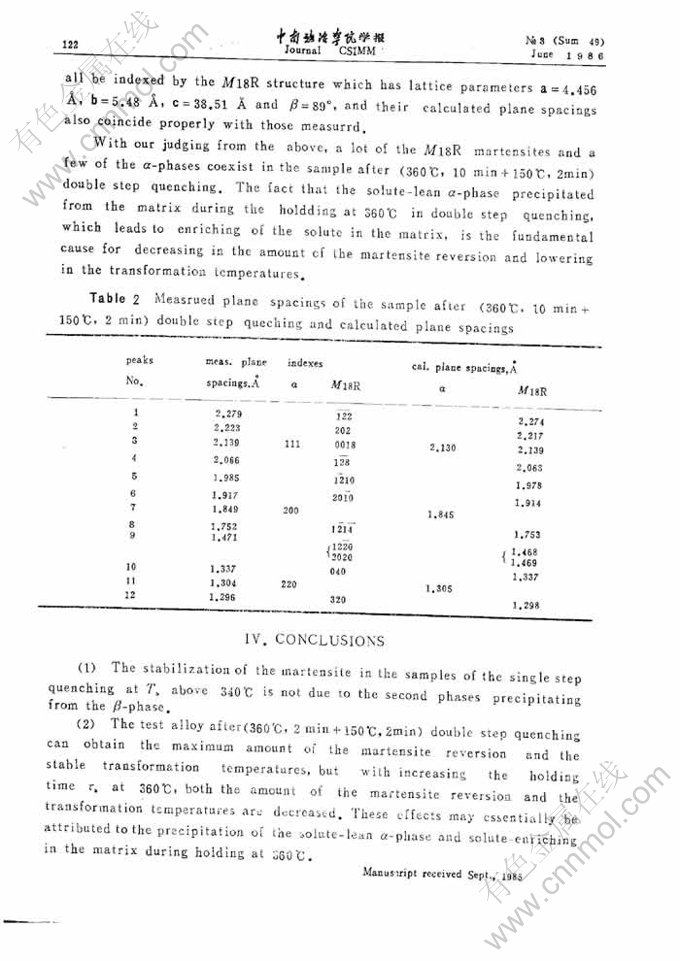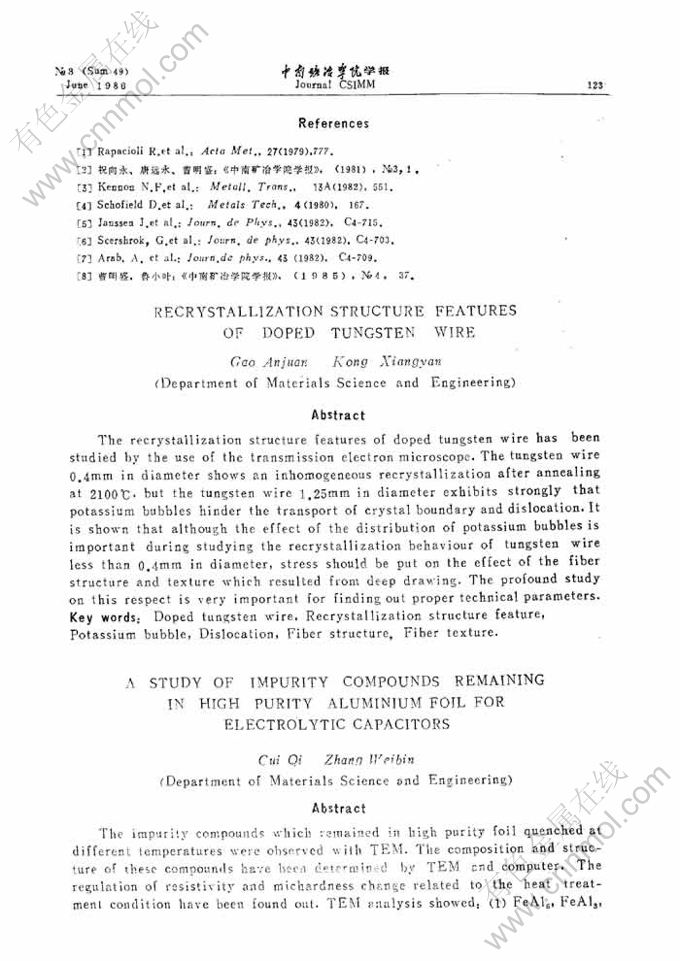Cu-Zn-Al形状记忆合金的双分级淬火
来源期刊:中南大学学报(自然科学版)1986年第3期
论文作者:鲁小叶 曹明盛
文章页码:115 - 123
关键词:马氏体; 形状记忆合金; 铜基合金; 分级淬火; 稳定化
Key words:Martensite; Shape memory alloy; Copper base alloy; Step quenching; Stabilization
摘 要:合金的形状记忆效应是以热弹性马氏体转变为基础,通常要求该类合金具有较大的热弹性马氏体可逆转变量和稳定的特征转变温度。但是,这些参数与热处理条件密切相关,特别是在M_s高于室温的三元Cu-Zn-Al形状记忆合金中存在着热弹性马氏体的稳定化现象。作者曾研究了Cu-14.84Zn-7.75Al(wt%)形状记忆合金在单分级淬火条件下的热弹性马氏体转变行为,并探讨了热弹性马氏体稳定化机理。本文用直流电阻法、金相显微镜、扫描电镜、X-射线衍射等方法继续对该合金在双分级淬火条件下的热弹性马氏体转变行为进行了研究。主要结果如下: (1)本实验合金经(360℃,2分钟+150℃,2分钟)双分级淬火可获得最大热弹性马氏体可逆转变量和稳定的特征转变温度,但双分级淬火在360℃停留时会使贫溶质原子α相在原β相晶界和晶内析出,导致基体相中溶质原子富化。随着360℃停留的时间延长,α相逐渐增多,热弹性马氏体可逆转变量和特征转变温度(M_s,M_f,A_s,A_f)分别逐渐减少和降低。当基体相完全分解成多相组织时,其热弹性才完全消失。 (2)在T_s高于340℃的单分级淬火试样中热弹性马氏体的稳定化,不是由于母相中第二相析出所造成。 (3)双分级淬火试样的热弹性马氏体可逆转变量减少和特征转变温度降低是因为在360℃停留时析出了贫溶质原子α相和基体溶质原子富化所造成。
Abstract: The behaviour of the thermoelastic martensite transformation during the doublestep quenching in Cu-14.84Zn-7.75A1(wt%) shape memory alloy has been investigatedby means of resistivity measurement, optical microscope, SEM and X-ray diffractiontechnique. The main results are as follows: (1) The stabilization of the martensite inthe samples of the single step quenching at T, above 340℃ is not due to the secondphases precipitating from the β-phase. (2) The test alloy after (360℃,2min+150℃,2min) double step quenching can obtain the maximum amount of the martensite rever-sion and the stable transformation temperatures, but with increasing the holdingtime τ_s at 360℃, both the amount of the martensite reversion and the transformationtemperatures are decreased. These effects may essentially be attributed to the precipi-tation of the solute-lean α-phase and solute-enriching in the matrix during holdingat 360℃.
